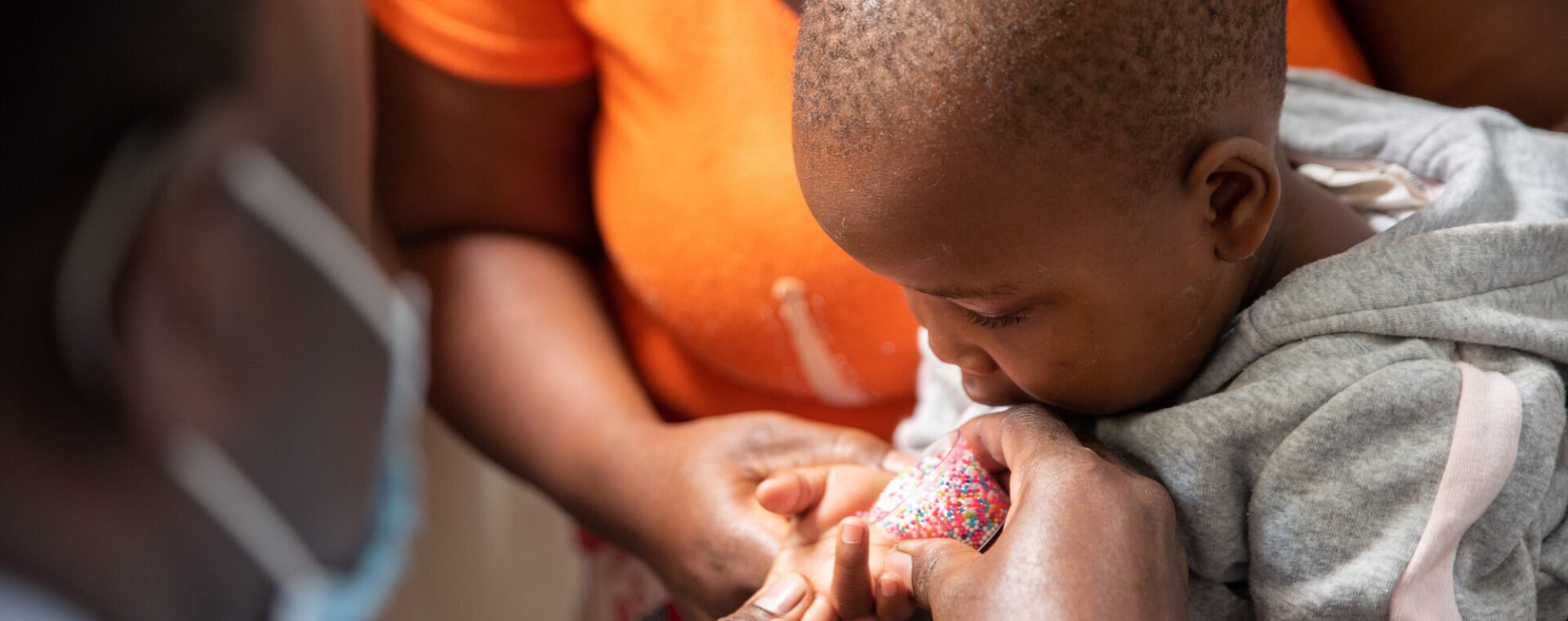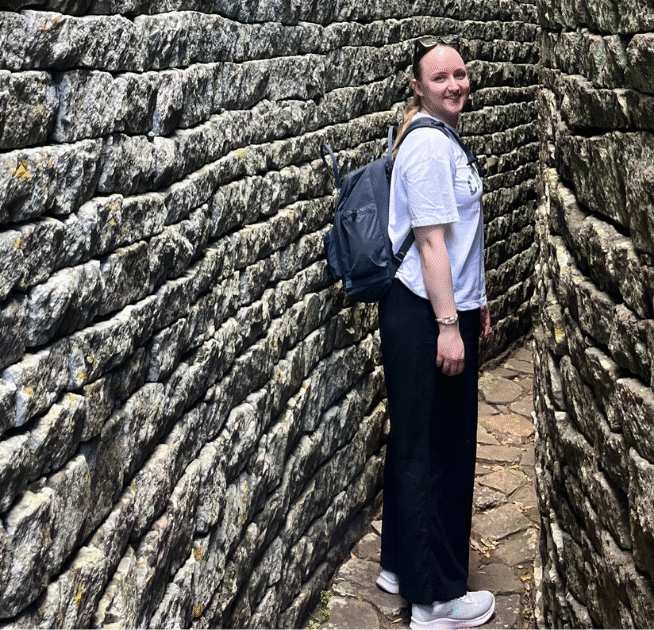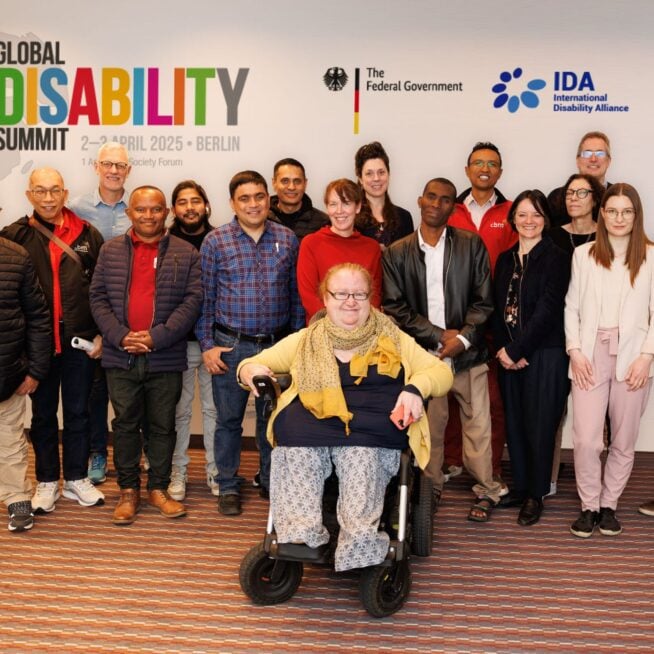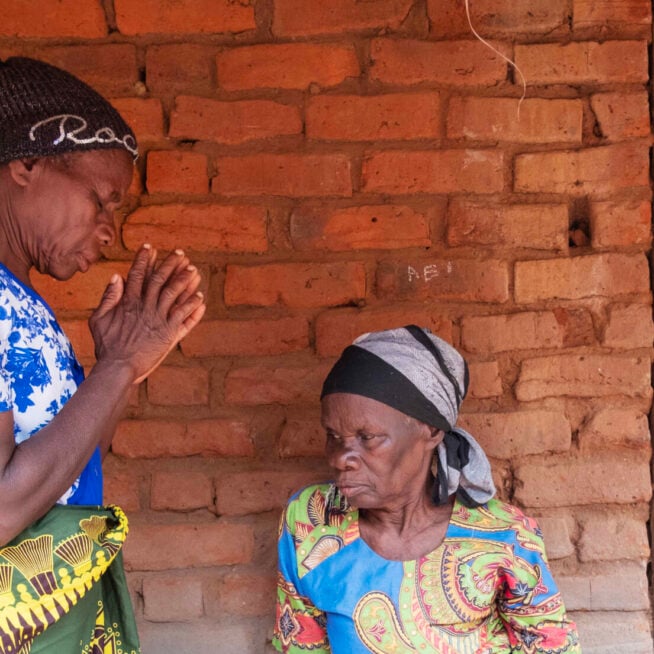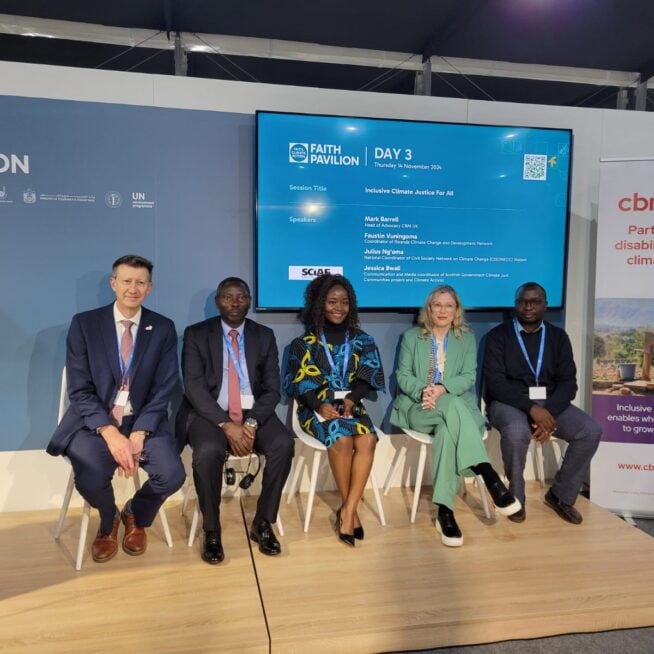Want to transform lives with us? Stay in touch and hear about our news, activities and appeals by email!
International Day for the Elimination of Violence against Women: Breaking the Cycle in Nigeria
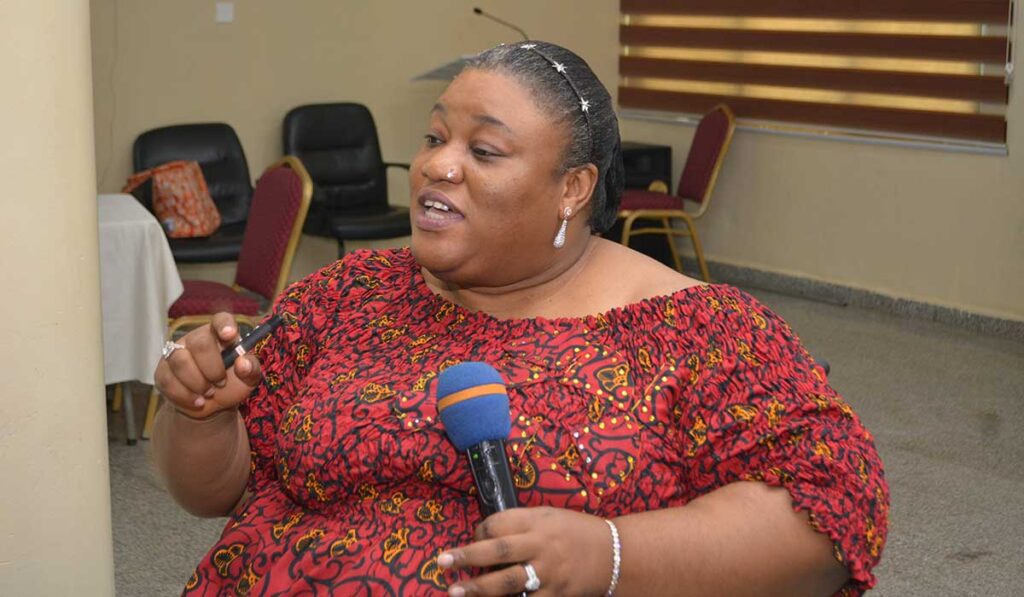
Irene Ojiugo is Executive Director of CBM’s partner Disability Rights Advocacy Centre (DRAC) in Nigeria. Together through our Break the Cycle project – funded by the UK Aid Direct scheme – DRAC and CBM are reducing violence against women and girls with disabilities in Nigeria by helping them to become more economically independent. Find out more about this project.
Today is International Day for the Elimination of Violence against Women. Every year, the 25th November marks the beginning of 16 Days of Activism against Gender-Based Violence, which runs until 10 December, Human Rights Day.
CBM and DRAC join with individuals and organisations around the world during this time in calling for the elimination of violence against women and girls.
Did you know?
- 1 in 3 women and girls experience physical or sexual violence in their lifetime, most frequently by an intimate partner (according to the UN (UN website – open in new tab)
- Emerging data shows an increase in calls to domestic violence helplines in many countries since the outbreak of COVID-19.
- Women and girls with disabilities in Nigeria are at least twice as likely as other women and girls to experience rape, sexual abuse and intimate partner violence.
Hear from DRAC’s Irene Ojiugo, in this Q&A, as she explains more about the Break the Cycle (BTC) project and the positive steps it’s making to reduce violence against women and girls in Nigeria, including those with disabilities:
- Why did DRAC decide to tackle the issue of violence against women and girls with disabilities? What is the current situation in Nigeria? Why are women and girls with disabilities more likely to experience violence?
The first evidence for intervening in the issue of violence against women and girls came from the numerous reports DRAC started receiving as soon as it was clear that we had a bias for women and girls with disabilities. We began to receive an influx of reports from women with diverse disabilities about the various forms of abuse they faced. In addition, some parents of girls with disabilities also reported their suspicions about their children being abused in school or at home. This prompted DRAC, with support from CBM UK, to carry out a baseline survey in 2017 on knowledge attitude and practice of the general population on violence against women and girls with disabilities in the FCT, Nigeria.
The study found that women and girls with disabilities experience high levels of violence and continue to suffer high levels of stigma and discrimination in communities. The policy environment also did not support the rights of women and girls with disabilities.
They lacked access to support services and legal redress for victims of violence, therefore perpetrators of violence go unpunished.
The study also identified that there are systemic barriers to social, political, and economic opportunities for women and girls with disabilities; gender, disability and poverty also intersect to significantly increase vulnerability to violence and discrimination.
Most women with disabilities were unable to escape the situations of violence because of their dependence on their caregiver and lack of socio-economic independence, occasioned by poor access to education and economic opportunities.
The Break the Cycle project therefore focusses on tackling violence primarily through supporting women and girls with disabilities to become socially, politically, and economically empowered.
- In many countries worldwide, an increase in domestic violence against women and girls has been reported during the Coronavirus pandemic. Has this been something DRAC has been aware of in Nigeria?
There were also reports on increase in domestic violence among women and girls in Nigeria during the coronavirus pandemic, especially during the lockdowns where they were compelled to spend time at home. Women and girls with disabilities were also affected and DRAC received 2 formal reports which were addressed and referred to the relevant authorities.
- How is Break the Cycle reducing violence against women and girls?
Break the Cycle is addressing violence against women and girls through empowerment. Its complementary ‘sister’ project, Respect Not Abuse (RNA), conducted activities more directly focused on addressing violence.
Together, the two projects addressed the key drivers of violence against women and girls with disabilities. Building an enabling environment as the main pathway towards tackling gender inequality by empowering women-led civil society.
Disability and women’s movements institutionalise mainstreaming of gender and disability issues (respectively) and initiating joint inclusive actions for the benefit of women and girls with disabilities, such as advocacy for the rights to access education and vocational training.
As a result, the broader civil society is strengthened and enabled to continue supporting the inclusion and empowerment of women and girls with disabilities after Break the Cycle ends, for example by advocating for women and girls with disabilities to access Sexual and Reproductive Health Rights (SRHR) services, or continuing to support women and girls with disabilities into Village Savings and Loans Associations (VSLAs), vocational training and leadership in other communities.
- How is Break the Cycle empowering women and girls?
BTC is empowering women and girls with disabilities through VSLA groups. The groups which have a maximum of 25 members comprise of women with disabilities, men with disabilities (who are invited by the women with disabilities) and caregivers of women and girls with disabilities.
VSLA members were introduced to vocational skills training most suited to their needs and ambitions. Placements were arranged for women and girls with disabilities with local tradespeople.
Peer support on business development is also provided through the VSLAs. Life skills training for women and girls with disabilities incorporated role models and covered topics such as rights, assertiveness, problem-solving and providing peer support for survivors of violence
The project will organise trade fairs to publicise and kick-start micro-enterprises, helping to overcome stigma. Assistive devices were provided where required, along with orientation on use and maintenance.
- How is Break the Cycle supporting women to earn a living?
Empowerment of women and girls’ initiatives is the main pathway to BTC’s economic and leadership outcomes. Women and girls with disabilities have been supported to set up VSLAs, develop vocational and business skills, and develop their own micro-enterprises for economic empowerment. So far, 49 VSLAs have been set up across the communities with 592 women with disabilities actively saving.
Through VSLAs, women with disabilities have been able to grow their finances. Some women barely had a table of foodstuff to sell when they joined the VSLA but after 6 months, they have expanded to renting shops in the markets. Some women who could not access loans from banks, can now access it from the savings they make in their various groups. These loans have been used to start up small businesses which have given them a source of income.
Women with disabilities have also been supported to develop leadership skills and received life skills training, to underpin their socio-economic empowerment.
How is Break the Cycle making communities more inclusive?
Through the identification and training of male inclusion champions, influential men are learning about disability and gender inclusion and leading community attitude and behaviour change to open space for women and girls with disabilities to develop businesses and campaign for leadership positions. Community theatre, town hall meetings and radio also helped raise community awareness on the importance of education for girls with disabilities.
BTC is achieving its civil society strengthening outcome by facilitating cross-fertilisation between the disability and women’s movements. Through joint meetings, training and joint action on advocacy and awareness-raising, Disabled People’s Organisations (DPOs) are learning about gender inclusion and women’s groups about disability inclusion.
- What are you most proud of about Break the Cycle?
The ability of the project to give hitherto ‘unimportant’ and voiceless women with disabilities a voice in their homes and a role in their communities.
- What most inspires you about your work?
The fact that the lives of women with disabilities are improved and we see the changes unfolding in the course of our implementation and during the life of the project.
- What do you think makes DRAC and CBM’s partnership successful?
CBM and DRAC have extensive experience on gender and disability inclusion and supporting women with disabilities to develop leadership skills. Both organisations are centred on improving the lives of persons with disabilities. There is also open, frank, and supportive communication between both partners.
- What more needs to be done to support women and girls in Nigeria?
Basically, empowering women with disabilities with funds to start-up businesses after learning skills will go a long way to help them sustain what they have learnt. Also supporting them to take up leadership roles to improve their visibility and amplify their voices.
Image: Irene Ojiugo, Executive Director DRAC, facilitating a session organised for CSOs, OPDs and women’s groups on Disability Inclusion and Violence against Women and Girls with Disabilities.
